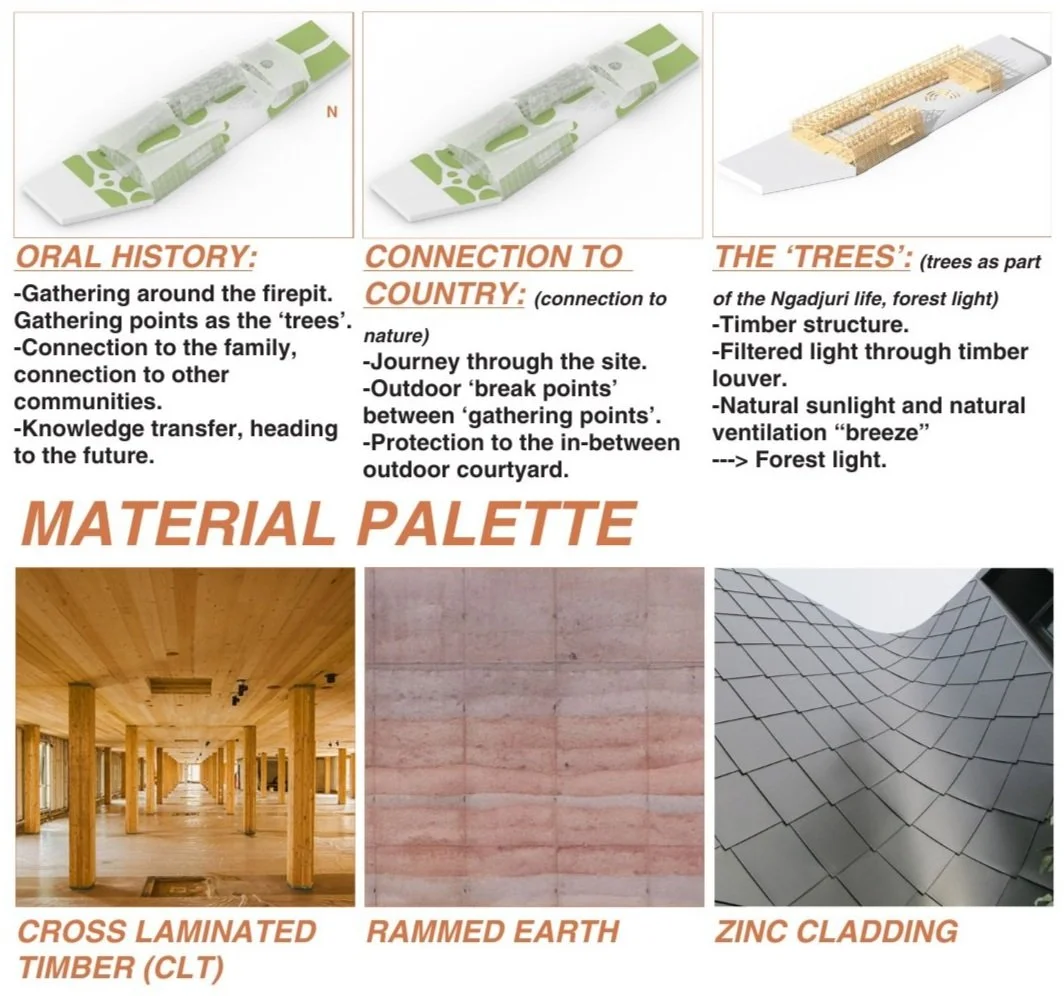Ngadjuri Arts, Tourism & Education Centre
The NATE Centre was envisioned as an open and welcoming space—one where people from all walks of life can come together to learn about, celebrate, and carry forward the knowledge of the Ngadjuri people. The planning is inspired by the symbolism of the campfire, one of the most fundamental expressions of community and storytelling. A lightweight timber structure allows natural light and ventilation to flow throughout the space, evoking the dappled atmosphere of the forest—the landscape where Ngadjuri stories first began.
Discipline
Architecture Design & Story Telling
Location
Burra, South Australia
Software
Rhinoceros3D, Grasshopper3D, AutoCAD, Photoshop, Illustrator, Lumion
Client
School of Art, Architecture & Design - University of South Australia
'Rural Future'
Rooted in the stories and traditions of the Ngadjuri people, the NATE Centre reimagines a rural future grounded in connection to Country, community, and nature. Inspired by the Ngadjuri’s oral history—where knowledge is shared around firepits and beneath trees—the design creates spaces for gathering, reflection, and learning. Journey paths, outdoor “break points,” and a central courtyard encourage cultural continuity and a sense of belonging.
The architectural response combines cultural respect with environmentally responsible design. Material choices reflect both performance and place: cross-laminated timber (CLT), a low-impact prefabricated system, forms the primary structure—offering warmth, reduced construction impact, and a spatial quality reminiscent of the forest canopy. Rammed earth walls add thermal mass and a direct visual and tactile connection to the land, while zinc cladding offers longevity and a graceful ageing process within the natural setting.
These materials are paired with passive and active environmental strategies that support self-sufficiency and low-energy living. Solar orientation, operable louvers, and elevated roofing enable natural light and cross ventilation. On-site water systems collect and recycle rainwater and greywater, supporting the centre’s use and its surrounding gardens. Solar panels and battery storage reduce reliance on external energy, and hydronic underfloor heating maintains thermal comfort with efficiency.
Altogether, the NATE Centre becomes a model for a rural future—one that balances innovation and tradition, and stands as a culturally responsive, environmentally grounded space shaped by care for people, place, and knowledge.











